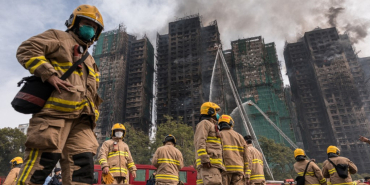India Closes Schools as Air Quality Reaches Dangerous Levels

Delhi continues to grapple with unprecedented air quality challenges, with the city's Air Quality Index (AQI) reaching a critical level of 494 on Tuesday, far exceeding safe environmental standards.
The severe atmospheric conditions have prompted widespread institutional responses and raised significant public health concerns. Educational authorities have implemented protective measures, including the closure of primary and middle schools in Delhi and its surrounding regions. Two prominent universities have transitioned to online learning platforms until late November. A dense fog has blanketed the capital and neighbouring states of Uttar Pradesh and Haryana, further intensifying the already dire air quality situation.
Monitoring stations across the national capital have recorded AQI levels approaching 500, categorized as "severe" on the environmental measurement scale. The India Meteorological Department has issued an orange alert for dense fog for the second consecutive day, resulting in substantial transportation disruptions. According to reports, at least 22 trains experienced delays, and eight flights have since been diverted. Local political figures have demanded immediate intervention with Delhi's environment minister Gopal Rai suggesting innovative solutions such as artificial rain to mitigate the smog.
Opposition leader Shashi Tharoor has gone further, provocatively questioning the city's suitability as a national capital given its chronically poor environmental conditions. The human and ecological toll of this environmental crisis is becoming increasingly apparent as hospitals report a surge in patients experiencing respiratory complications, while residents describe persistent coughing and breathing difficulties. Even wildlife is not immune, with Delhi Zoo staff deploying water sprinklers to protect animals from hazardous atmospheric conditions.
Delhi's persistent air pollution stems from a confluence of industrial activities, extensive vehicular traffic, and continuous construction. The situation is dramatically exacerbated by agricultural practices in neighbouring states, particularly stubble burning in Punjab and Haryana, which significantly elevates particulate matter concentrations.














Add new comment